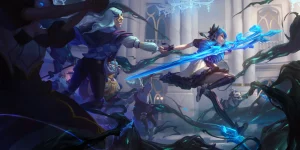Annie is great at making new friends, and this expansion has been no different — here we’ll look at how she has teamed-up with Gwen to stitch up the meta.
Very reminiscent of Annie Elise from last season, Annie Gwen is the new face of the Noxian Go Hard strategy.
strategy.
We play as a fairly reactive deck, leveraging Noxus' very mana-efficient removal with an abundance of cheap ping effects from the Shadow Isles, with the intention of stalling and slowing down the opponent before telling them, "Hey, Pack Your Bags .”
.”
The deck also has access to an impressive amount of flexibility, thanks to the depth of control tools in Noxus and Shadow Isles, letting it adapt well to changing metas or allowing it to focus even harder on targeting specific strategies.
Annie Gwen, like most Ravenous Flock decks, is very good at clearing up the unrefined homebrews you may encounter in these early days of the expansion, as well as being a good counter to the faster decks like Azir Irelia, Annie Jhin and Elise Gwen.
decks, is very good at clearing up the unrefined homebrews you may encounter in these early days of the expansion, as well as being a good counter to the faster decks like Azir Irelia, Annie Jhin and Elise Gwen.
However, the deck cannot beat everything and is putting up some fairly woeful performances against all flavors of Kai'Sa Demacia.
Quick Overview
Through the early game, Annie Gwen aims to deal chip damage where it can, while trying to also progress Ravenbloom Conservatory in order to get Tybaulk
in order to get Tybaulk and his damage amplification rolling quickly. We want to find both our champions very early on – their on-attack skills allow us to efficiently progress the Conservatory without the need to expend removal, letting us maintain our reactive options.
and his damage amplification rolling quickly. We want to find both our champions very early on – their on-attack skills allow us to efficiently progress the Conservatory without the need to expend removal, letting us maintain our reactive options.
The spider package of House Spider , Arachnoid Sentry
, Arachnoid Sentry and Vile Feast
and Vile Feast also fulfills this role well, allowing us to swarm reasonably well in the early game to push through that chip damage, while Sentry and Vile Feast provide interaction that doesn’t compromise the early damage. Any of these cards are ideally what you find in your mulligan.
also fulfills this role well, allowing us to swarm reasonably well in the early game to push through that chip damage, while Sentry and Vile Feast provide interaction that doesn’t compromise the early damage. Any of these cards are ideally what you find in your mulligan.
Finding an early Go Hard and Catalogue of Regrets
and Catalogue of Regrets , however, can be a good reason to push more for a slower gameplan and commit harder into trying to fire off an early Pack Your Bags
, however, can be a good reason to push more for a slower gameplan and commit harder into trying to fire off an early Pack Your Bags .
.

18 cards

22 cards
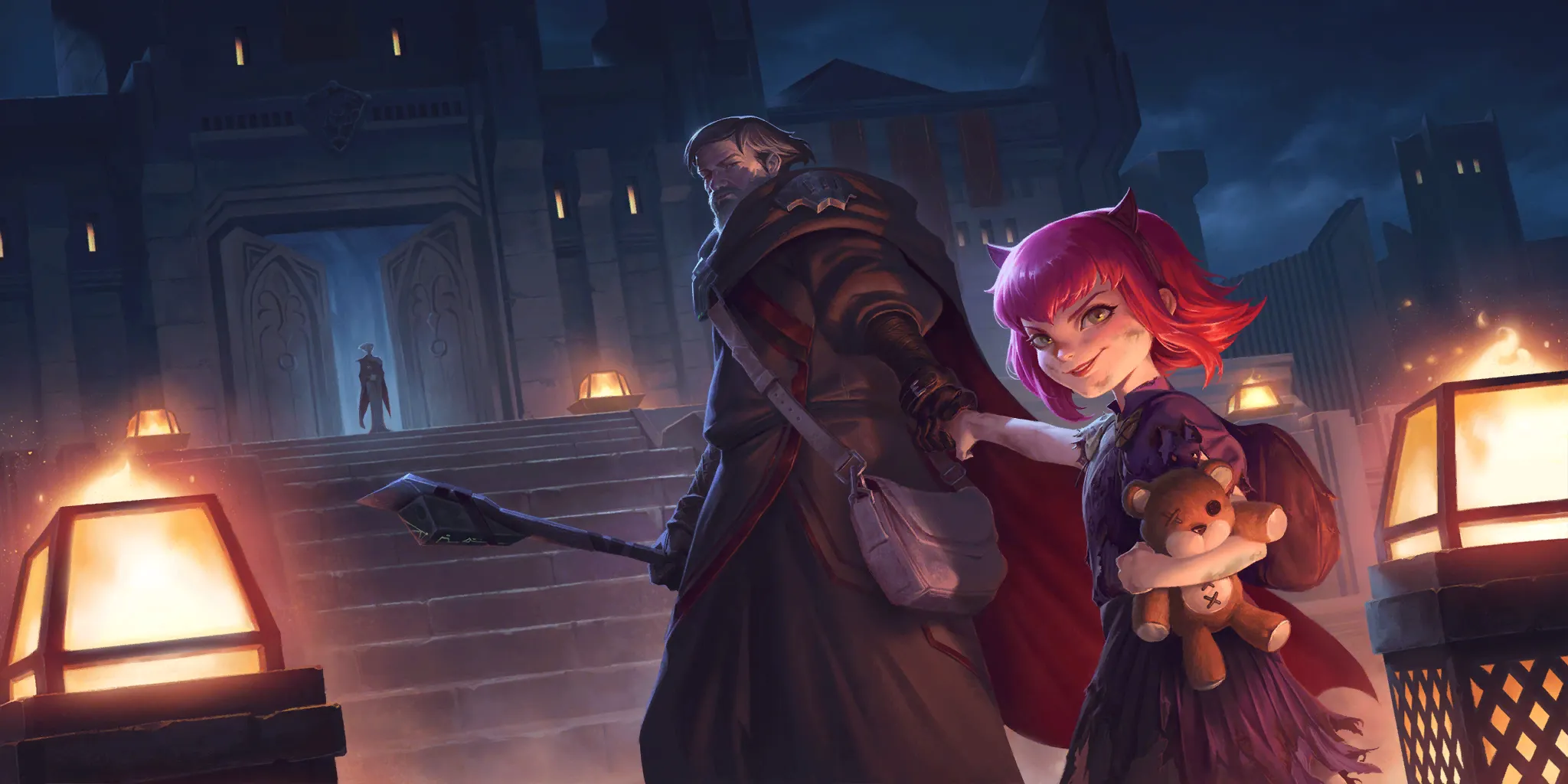
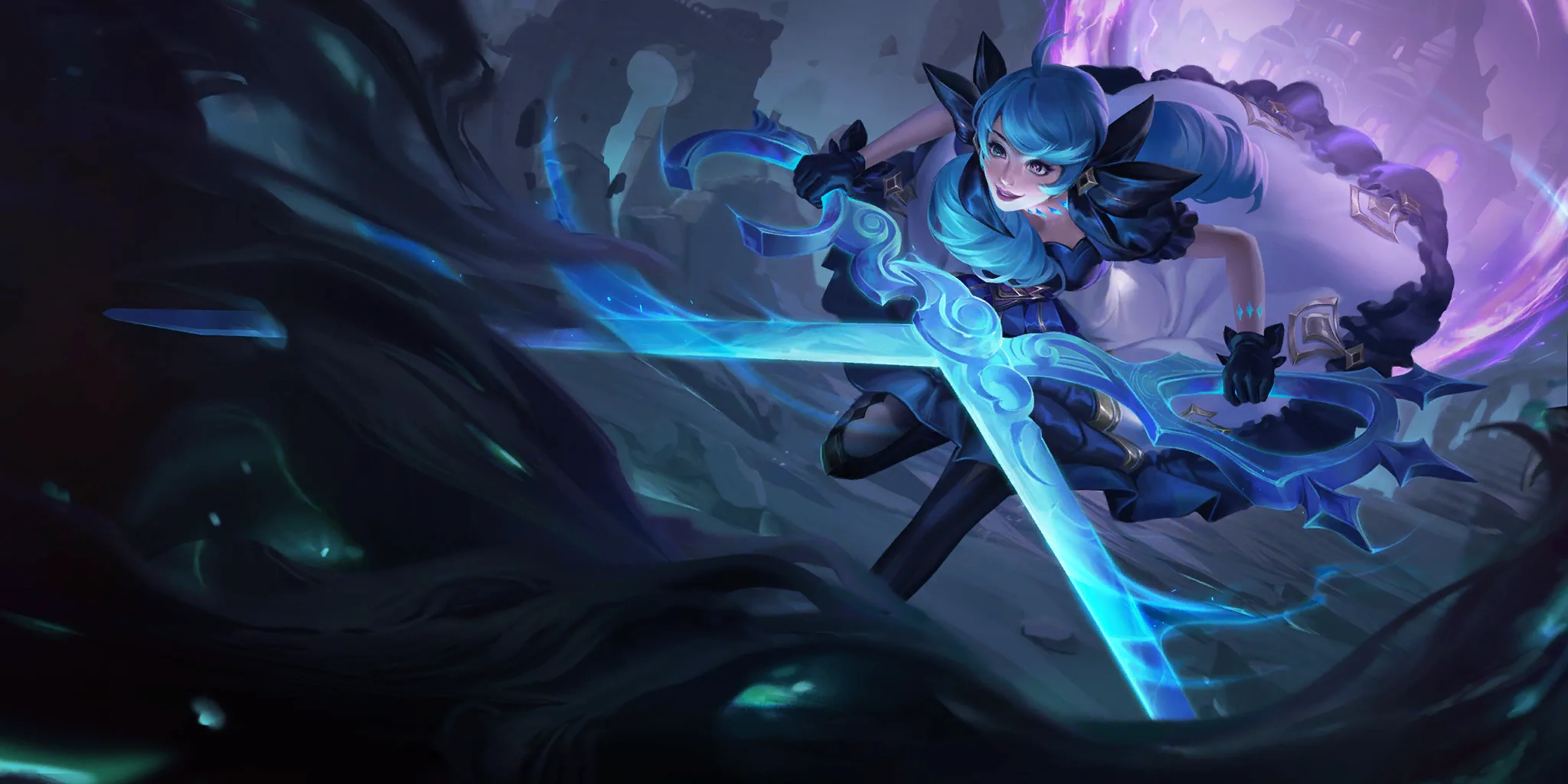

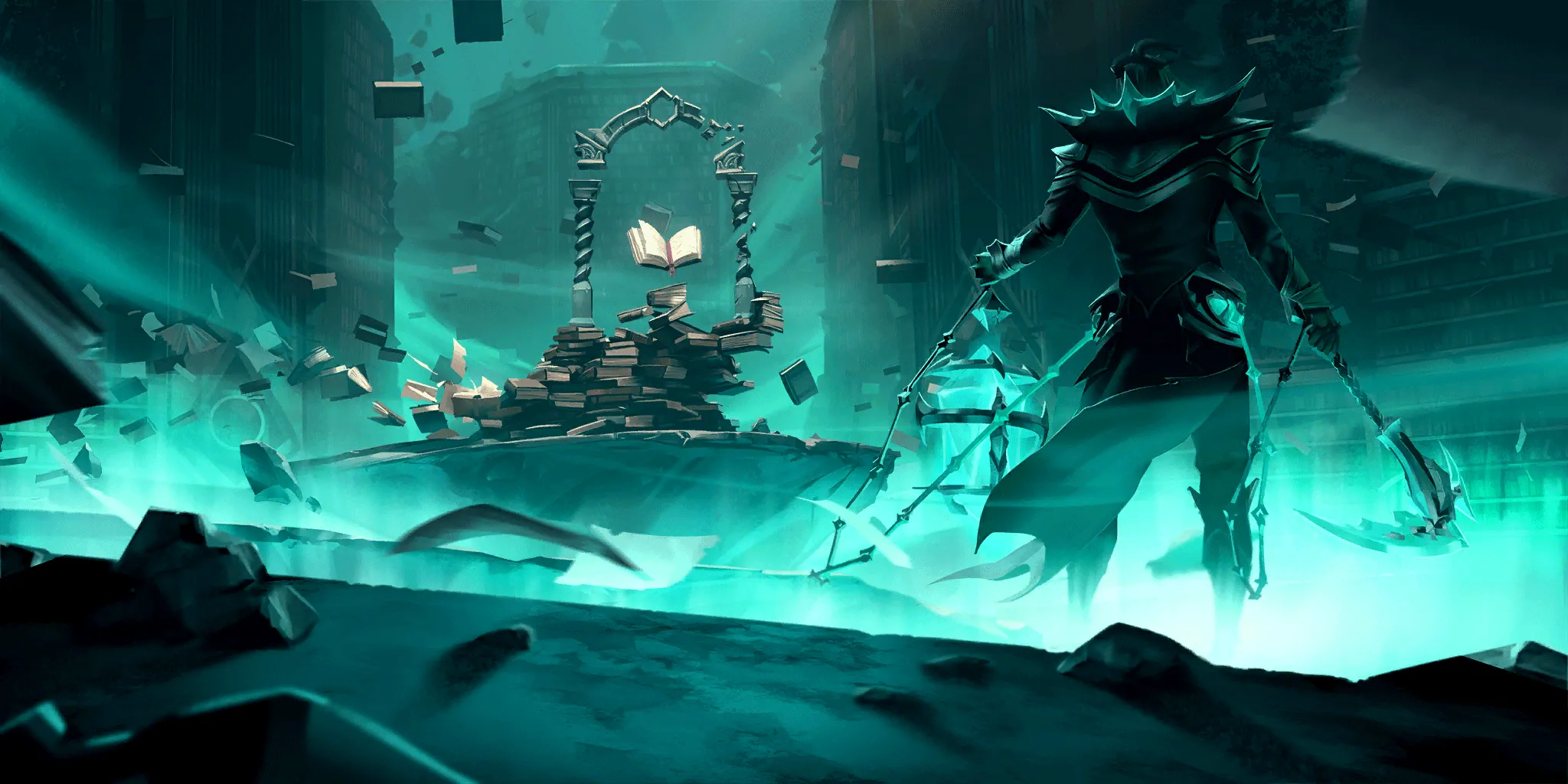
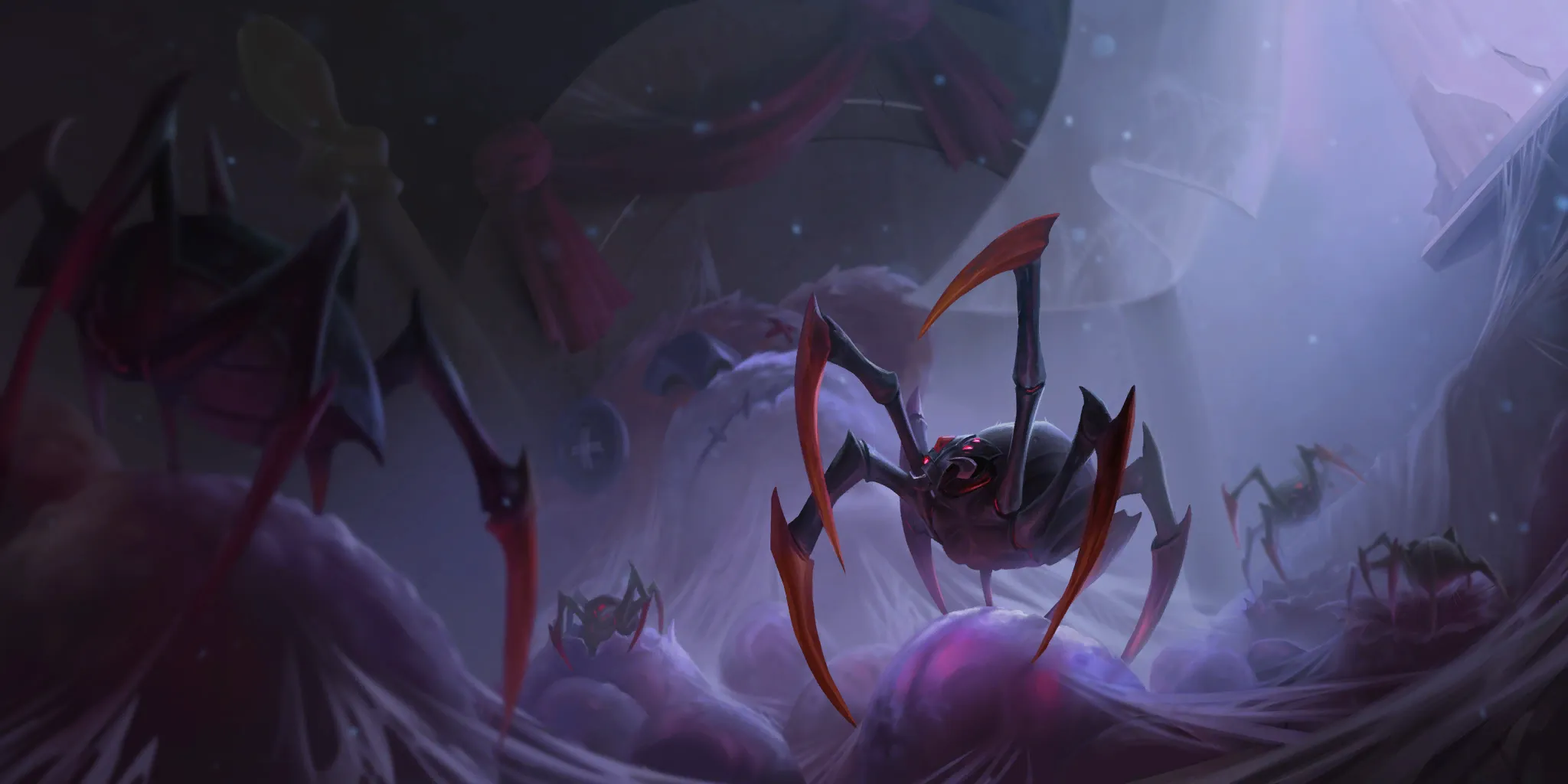



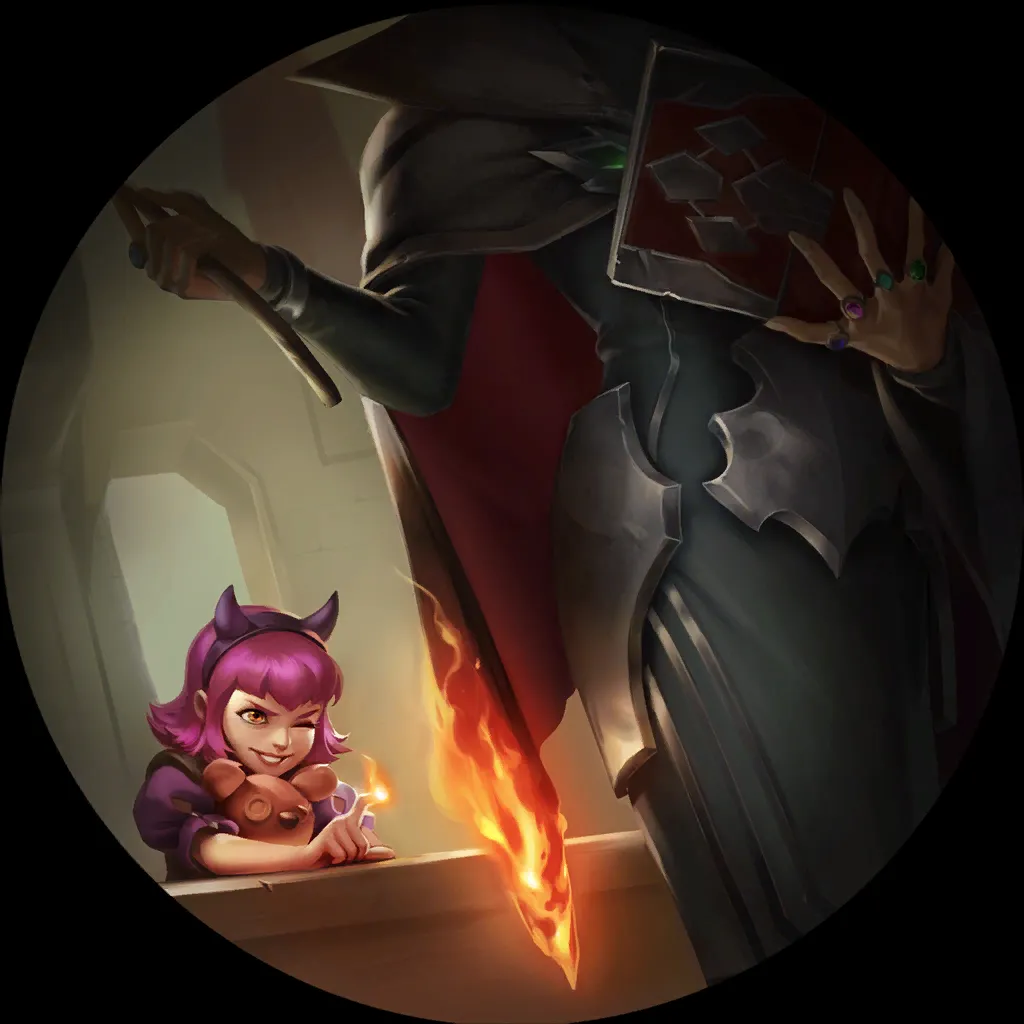

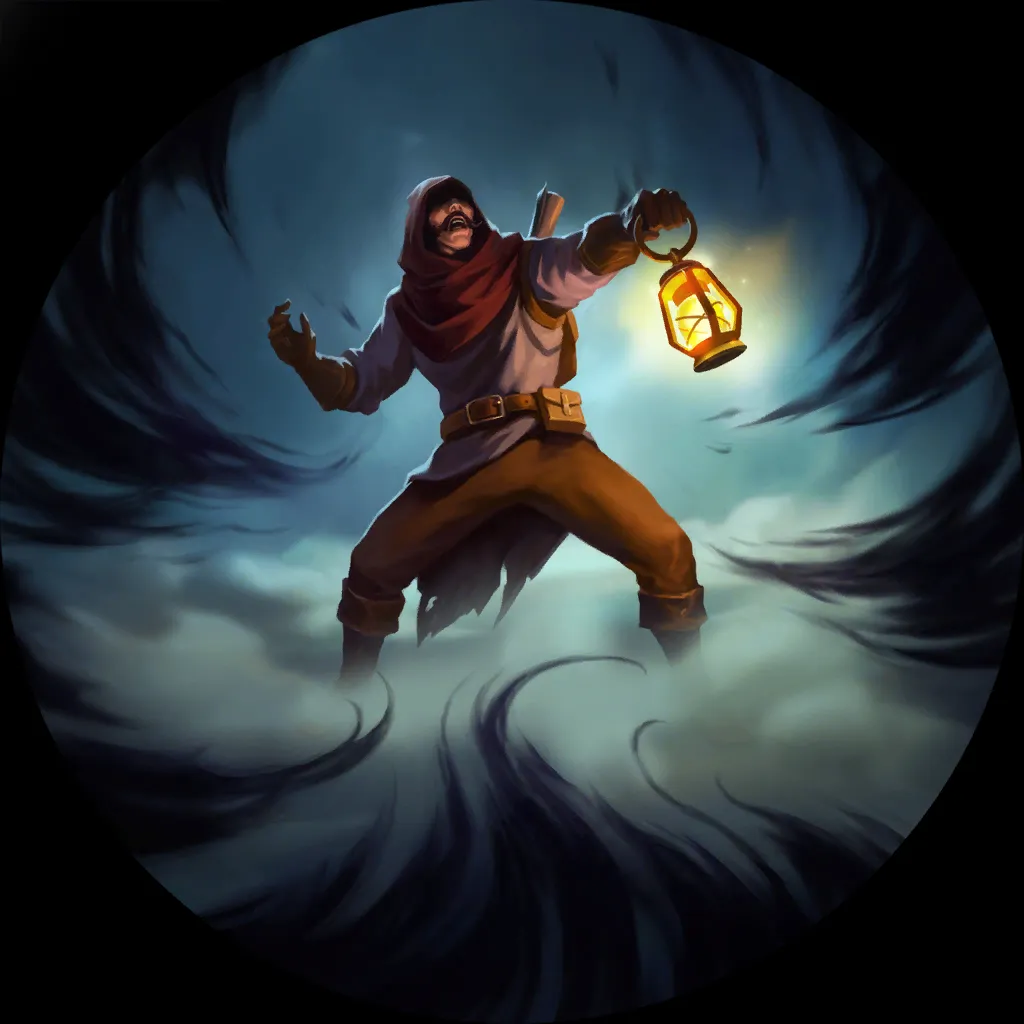


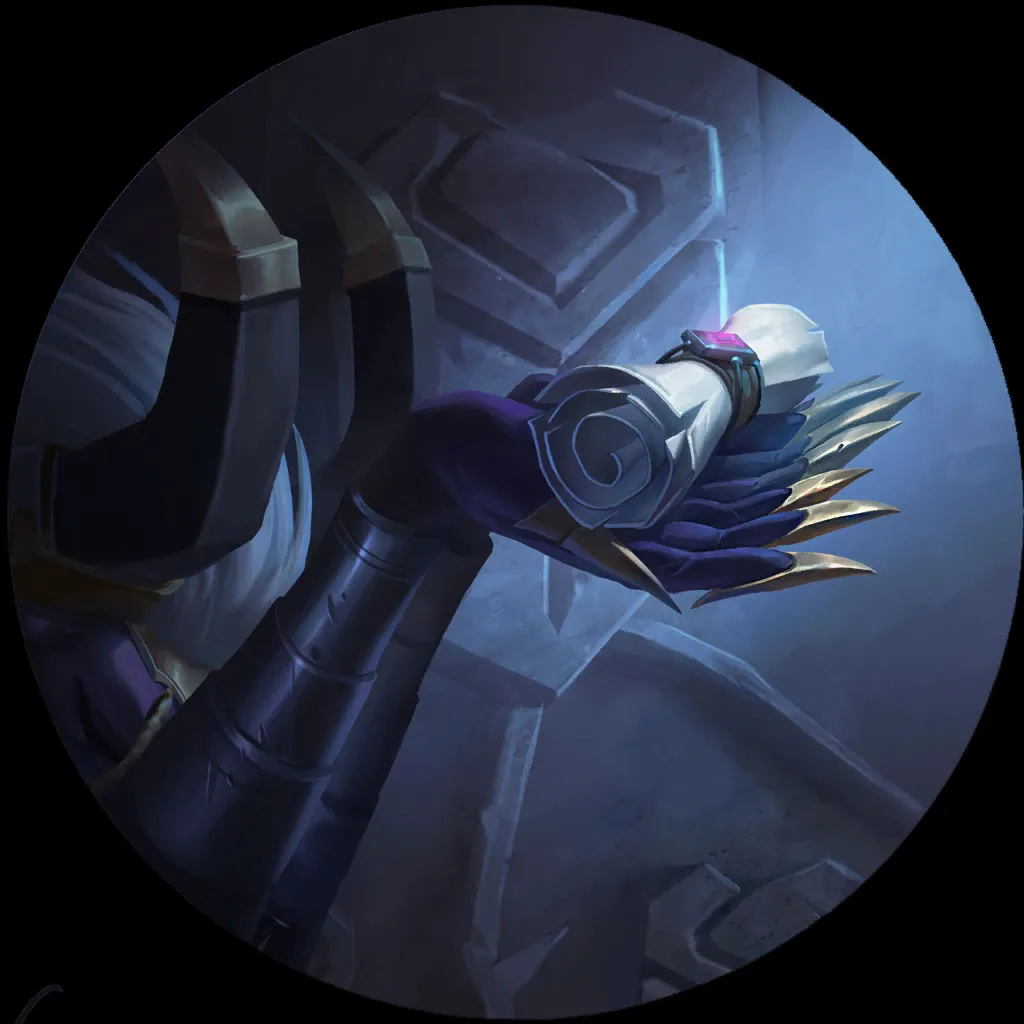

Made to Measure
School is in Session


Ravenbloom Conservatory and its resident fire demon Tybaulk
and its resident fire demon Tybaulk are the core of the deck, and a lot of the decisions that we make – both from a gameplay and deck building perspective – are based around them. Not only is Tybaulk on his own a very solid win condition as a very large Overwhelm unit, but the damage amplification lets our small pings stay relevant as the game goes longer and our foe's units grow bigger.
are the core of the deck, and a lot of the decisions that we make – both from a gameplay and deck building perspective – are based around them. Not only is Tybaulk on his own a very solid win condition as a very large Overwhelm unit, but the damage amplification lets our small pings stay relevant as the game goes longer and our foe's units grow bigger.
Finding Conservatory in the early rounds is crucial, given how much Tybaulk does for us, so it is always something you will look for and keep in your mulligans. A round-one Conservatory will often be activated by round six just by playing naturally, and dropping an on-curve Tybaulk gives us a big power spike which we can launch off of.
The Schoolgirl…


Where Ravenbloom Conservatory goes, Annie
goes, Annie (and everyone’s favorite bear Tibbers
(and everyone’s favorite bear Tibbers ) follows.
) follows.
All Conservatory decks need proactive ways of getting the landmark ticking down, and units with repeatable skills are the perfect source for them.
And Annie is the ideal candidate for that role.
Not only is she very cheap and can get those skills rolling immediately, but the protection that Molten Shield gives her in combat lets her attack in those early rounds without much risk of getting blown out. Even as the game goes later, holding up two mana when Annie attacks makes it difficult for the opponent to safely block her, given the strong threat of Disintegrate
gives her in combat lets her attack in those early rounds without much risk of getting blown out. Even as the game goes later, holding up two mana when Annie attacks makes it difficult for the opponent to safely block her, given the strong threat of Disintegrate being a major blowout.
being a major blowout.
Considering how the deck aims to flip Conservatory quite quickly, it should come as no surprise that leveling up Annie is also a very achievable task, and getting access to Tibbers is really useful for the deck. With his effect both acting as a fourth stun for the deck, as well as being yet another payoff for setting up damage on enemy units, Tibbers synergizes very well with the majority of our control package.

Finally, Annie’s champion spell, Disintegrate, is another really powerful tool. Not only does it aid how easily she can attack (since the odds of you having Disintegrate are now much higher), but it also has the ability to unbrick hands low on our “finisher” removal cards, as we’ll look at in more depth later.
… And The Seamstress

Gwen ’s introduction to the game has been a great boost to this deck.
’s introduction to the game has been a great boost to this deck.
As I mentioned previously, this shell used to run Elise as our second champion. The Mistress of Spiders is by no means bad, but she tends to fall off a lot earlier in the game (being only a two-drop) and the deck can often struggle if it goes behind early, as it lacks great ways to launch a comeback.
as our second champion. The Mistress of Spiders is by no means bad, but she tends to fall off a lot earlier in the game (being only a two-drop) and the deck can often struggle if it goes behind early, as it lacks great ways to launch a comeback.
Gwen changes that, and gives the deck a bit of comeback oomph. She’s a bulkier unit that lets you contest mid-game boards a bit better, as well as having some built-in sustain on attack to keep you from falling behind.
Some might be a tad disappointed that we don’t commit more to the Hallowed package and instead treat her as a repeatable Doombeast , but ultimately that’s all the deck needs.
, but ultimately that’s all the deck needs.
In fact, it can sometimes be a mistake to try and push to level-up Gwen, since at Level 2 the opponent gets an opportunity to stop the on-attack burn by killing Gwen before combat resolves, a risk which often doesn’t outweigh pushing at best one extra damage.
More broadly speaking, Gwen is also just a big Annie : she has an on-attack skill for Conservatory progression, as well as the ability to very safely attack for chip damage with the backup of Disintegrate
: she has an on-attack skill for Conservatory progression, as well as the ability to very safely attack for chip damage with the backup of Disintegrate thanks to her Quick Attack.
thanks to her Quick Attack.
Having that extra redundancy in two of the deck’s core requirements is very helpful for consistency.
An Arachnophobe’s Worst Friends
While the deck is pretty light on units, the two that we do run are incredibly important.


House Spider and Arachnoid Sentry
and Arachnoid Sentry are no strangers to Noxus control archetypes, with both their ability to get through early chip damage – to better set up for Tybaulk
are no strangers to Noxus control archetypes, with both their ability to get through early chip damage – to better set up for Tybaulk or Pack Your Bags
or Pack Your Bags to close out games – and their incredible synergy with Ravenous Flock
to close out games – and their incredible synergy with Ravenous Flock .
.
House Spider in particular also puts in a lot of work in conjunction with Tybaulk.
While this deck, with its low unit count, doesn’t make the biggest use of the attack buff side of the fire demon, House Spider puts it to great effect: it can get some really solid swings in the later turns, as well as allowing it to trade up with plenty of threats.
However, with the move to Annie Gwen, there is one slight downside. Losing Elise does reduce the potential for aggressive starts that are only possible with Spider Queen Elise
does reduce the potential for aggressive starts that are only possible with Spider Queen Elise , since without her our spiders will just get chumped down after a certain point. This of course isn’t a massive loss, but still worth bearing in mind (as we will go over later).
, since without her our spiders will just get chumped down after a certain point. This of course isn’t a massive loss, but still worth bearing in mind (as we will go over later).
Cards, So Many Cards
One of the traditional weak spots of Noxian control lists is how quickly we run out of cards. Our removal is incredibly mana-efficient, but it comes with the trade-off that it is usually a 2-for-1 in terms of card advantage.
Therefore, we need to try and counteract this as best we can.


Whispered Words and Glimpse Beyond
and Glimpse Beyond are the core of our card advantage package.
are the core of our card advantage package.
Whispered Words is great for cycling through cards and refilling our hand, its relatively high cost being somewhat balanced out by how cheap the rest of our deck is (so we are rarely in positions where casting Whispered Words locks us out of the entire turn).
Glimpse is another card that suffers from the loss of Elise and her Spiderling generation, but between House Spider, Vile Feast and responding to removal we do still have plenty of fodder to support the card.
and responding to removal we do still have plenty of fodder to support the card.

Catalogue of Regrets is the other side of the card advantage coin. The ability to double-up a lot of our spells allows us to come out ahead in the value game, and lets us stretch maximum value out of hands low on either the ping or finisher side of our control package.
is the other side of the card advantage coin. The ability to double-up a lot of our spells allows us to come out ahead in the value game, and lets us stretch maximum value out of hands low on either the ping or finisher side of our control package.
Catalogue also has the built-in Go Hard synergy, letting us pack our opponent’s bags off as little as two Go Hards drawn. With Pack Your Bags
synergy, letting us pack our opponent’s bags off as little as two Go Hards drawn. With Pack Your Bags as one of our primary win conditions this is naturally something that we want to play for wherever possible.
as one of our primary win conditions this is naturally something that we want to play for wherever possible.
As with all Noxian control decks, our interaction package is split into two halves; we’ll refer to them as pings and finishers.
Just a Scratch…
On the pings front, we have quite the variety to choose from.
Vile Feast , Unspeakable Horror
, Unspeakable Horror and of course Go Hard
and of course Go Hard give us a substantial pool of pings – our deck can unfortunately brick fairly hard when we don’t find these cards, since hands that are heavy on finisher spells with no pings really cannot do all that much, so including the eight copies that we do is fairly important.
give us a substantial pool of pings – our deck can unfortunately brick fairly hard when we don’t find these cards, since hands that are heavy on finisher spells with no pings really cannot do all that much, so including the eight copies that we do is fairly important.
With the number of aggressive decks running around the ladder at the moment as well, the lifedrain these spells provide is a huge benefit, keeping us healthy through the game (and distinctly outside of Decimate range).
range).

Go Hard is obviously very vital to find early, as it is one of our core wincons. However, it’s not necessarily something you want to be using early – often it can be better to wait until you find a Catalogue of Regrets in order to guarantee you get decent progress towards Pack Your Bags
in order to guarantee you get decent progress towards Pack Your Bags .
.
It can also be prudent to save your Go Hards until after you find your core pieces like Ravenbloom Conservatory , since filling your deck with more and more Go Hards can work against you when you really need to find those other cards.
, since filling your deck with more and more Go Hards can work against you when you really need to find those other cards.


Vile Feast and Unspeakable Horror, meanwhile, are our more generic pings, each with their own individual upsides.
Vile Feast gives us a little more of a board, something we very often lack and therefore value quite a lot, as well as a Glimpse Beyond target.
target.
Unspeakable Horror has the potential to give us some more meaningful hand refill, with Doombeast , Eclipse Dragon
, Eclipse Dragon and Lunari Priestess
and Lunari Priestess all being really strong cards it can generate. Unto Dusk
all being really strong cards it can generate. Unto Dusk , Pale Cascade
, Pale Cascade and Heavens Aligned
and Heavens Aligned are also nice, given their ability to cycle themselves quite cheaply, and they have solid synergy with Catalogue of Regrets
are also nice, given their ability to cycle themselves quite cheaply, and they have solid synergy with Catalogue of Regrets .
.
There is also the added bonus of Unspeakable Horror being able to target the opponent’s Nexus, giving the deck a little bit of burn outside of Pack Your Bags.
However, it is important to note that activating Nightfall for Unspeakable Horror can be a little awkward, considering that it often is what you need to cast first in order to enable the Disintegrate or Ravenous Flock
or Ravenous Flock .
.

As the last ping, we of course have Withering Wail .
.
The bane of aggressive decks, Wail giving us access to AoE is great in this current meta. The other major advantage of Wail is that it can set up several units to be at risk of being hit by any one of our finisher spells, drastically reducing the extent to which we are going two-for-one.
… Until it’s Not
Now onto our finishers!



Ravenous Flock , Disintegrate
, Disintegrate and Scorched Earth
and Scorched Earth are really what make this deck shine.
are really what make this deck shine.
Flock is possibly the most efficient way of removing medium-sized threats in the game, making it very good at also beating your opponent’s protection spells (since they have to commit more mana than you to protect their units), leaving you in a good position to come out on top whenever you and the opponent go to war on the stack.
Likewise, Disintegrate is a very good way of beating any buffs used to protect a unit, giving you another great tool to come out on top against decks like Azir Irelia that focus on keeping engines stuck to the board. Disintegrate is also one of your most important cards when facing off against Kai'Sa, where killing her in a single action is important to get around the threat of Supercharge .
.
Finally, Scorched Earth is largely filling the role of being additional copies of Ravenous Flock, but the ability to kill landmarks like Emperor's Dais and Stasis Statue
and Stasis Statue is a very relevant and useful upside. In the mirror it is also very potent for blowing up Catalogues.
is a very relevant and useful upside. In the mirror it is also very potent for blowing up Catalogues.
Tailoring to the Meta
Now, I mentioned before that this Noxus - Shadow Isles shell is both flexible and adaptable, and there are plenty of cards not featured in the showcased list that are still very strong options.
Just a disclaimer for this section however: tweak at your own risk. Some of these potential techs are on the spicier side, and some are there to do very specific things, leaving you weaker in other matchups, which isn’t necessarily ideal in a ladder setting.
I’ll End This
One of the struggles that our deck can face is that both Ravenbloom Conservatory and Go Hard
and Go Hard often need to be found early in the game in order to get them rolling.
often need to be found early in the game in order to get them rolling.
As such, it can be a good idea to include a copy of a more standalone win condition that can allow us to pull back games where we start somewhat on the back foot.
Enter 
Farron as a body represents a very similar win condition to our Tybaulk s: a very large Overwhelm unit. He also gives us a solid pile of burn in the form of his Decimate
s: a very large Overwhelm unit. He also gives us a solid pile of burn in the form of his Decimate s, providing us some reach.
s, providing us some reach.
Those Decimates also work really well with Catalogue of Regrets , letting us have an EVEN BIGGER burn range since a single Catalogue can potentially let us get four Decimates.
, letting us have an EVEN BIGGER burn range since a single Catalogue can potentially let us get four Decimates.

Commander Ledros is another alternative for this slot if you prefer a grindier win condition, although with the current speed of the meta I would not recommend this over Farron.
is another alternative for this slot if you prefer a grindier win condition, although with the current speed of the meta I would not recommend this over Farron.
Die Kai'Sa, Die!
Unfortunately, our deck does not do terribly well into the various versions of Kai'Sa Demacia. One of the major issues is how Kai'Sa can drop on round five, and one action later have Spellshield from Supercharge
Demacia. One of the major issues is how Kai'Sa can drop on round five, and one action later have Spellshield from Supercharge , making it incredibly hard for us to remove her.
, making it incredibly hard for us to remove her.
So what if we don’t give them one action?

Going up to three copies of Disintegrate , or adding a copy of Vengeance
, or adding a copy of Vengeance can potentially mitigate this by giving us a larger number of cards that can kill Kai'Sa in a single action. Vengeance in particular does not need a two-card combo, and also lets us better deal with Tough units (which normally make us very, very sad).
can potentially mitigate this by giving us a larger number of cards that can kill Kai'Sa in a single action. Vengeance in particular does not need a two-card combo, and also lets us better deal with Tough units (which normally make us very, very sad).
Cull the Weak

In my opinion Culling Strike is a criminally underrated card for Noxus Control, especially in the current meta. There are a plethora of incredibly good targets for Culling Strike right now, from Azir
is a criminally underrated card for Noxus Control, especially in the current meta. There are a plethora of incredibly good targets for Culling Strike right now, from Azir and Irelia
and Irelia to the likes of Illaoi
to the likes of Illaoi , Viktor
, Viktor , Nami
, Nami , Fleet Admiral Shelly
, Fleet Admiral Shelly and even Gwen
and even Gwen .
.
The one major matchup where Culling is perhaps more of a liability is against Kai'Sa Demacia, with it not being able to touch any of the major threats that the deck throws out. However, being able to kill Silverwing Diver , which we would ordinarily struggle to get off the board, means that Culling Strike still isn’t a complete brick.
, which we would ordinarily struggle to get off the board, means that Culling Strike still isn’t a complete brick.
Two is Bigger Than One
Our removal suite is very centered around spells that can deal one damage to units, but there are some threats in the current meta, like Irelia and Katarina
and Katarina , that would really like us to be able to deal two damage instead.
, that would really like us to be able to deal two damage instead.
Another issue we can often run into against the likes of Radiant Guardian is that Tough units are very difficult for us to handle, and some two-damage removal would help a lot.
is that Tough units are very difficult for us to handle, and some two-damage removal would help a lot.


As such, Death's Hand and Undergrowth
and Undergrowth are both cards to consider for this role. They each have their pros and cons – Undergrowth’s healing is very nice to have, while Death’s Hand providing a little bit of burn is also useful.
are both cards to consider for this role. They each have their pros and cons – Undergrowth’s healing is very nice to have, while Death’s Hand providing a little bit of burn is also useful.
As perhaps a very rogue third option, Sigil of Malice is another very underrated card if you really think that the burn potential is necessary, although in general Sigil is the weakest of the three.
is another very underrated card if you really think that the burn potential is necessary, although in general Sigil is the weakest of the three.
Heads Will Roll
Noxian Guillotine vs Scorched Earth
vs Scorched Earth is a constant debate for Noxus control decks, and while Scorched is more often than not the preferred option, don’t write off Guillotine immediately.
is a constant debate for Noxus control decks, and while Scorched is more often than not the preferred option, don’t write off Guillotine immediately.
As the current meta is seeing a distinct downturn in the playrate of Thralls, there is a potential argument that there is a lesser need for landmark removal and consequently Guillotine might be the better option. The ability to deal with Emperor's Dais and Stasis Statue
and Stasis Statue might be too important, though.
might be too important, though.
Now that we’ve got the more obvious options out the way, let’s take a look at some spicier stuff.
Pretty (Deadly) Flower

Death Lotus is another card that, like Culling Strike
is another card that, like Culling Strike , I consider to be criminally underrated. In this current meta, between all the aggressive swarm decks and Azir Irelia, AoE damage is a really valuable resource to have access to. We already have some in Withering Wail
, I consider to be criminally underrated. In this current meta, between all the aggressive swarm decks and Azir Irelia, AoE damage is a really valuable resource to have access to. We already have some in Withering Wail , but at five-mana Wail can be a tad expensive, especially against Azir Irelia.
, but at five-mana Wail can be a tad expensive, especially against Azir Irelia.
This is where Death Lotus comes in.
Not only is it another AoE option, but it’s also a very cheap AoE option, letting us combine it very easily with Disintegrate s to wreak havoc on opponent’s attacks.
s to wreak havoc on opponent’s attacks.
Gone But Not Forgotten

As I’ve already mentioned, this deck used to run Elise as its second champion, and all the reasons that she was good in the deck before are still true now. We still value the ability to generate chump blockers and Glimpse Beyond
as its second champion, and all the reasons that she was good in the deck before are still true now. We still value the ability to generate chump blockers and Glimpse Beyond targets, we still value the chip damage that she provides as a two-mana Fearsome unit, and we still value the potential high-roll of hitting Level 2 Elise.
targets, we still value the chip damage that she provides as a two-mana Fearsome unit, and we still value the potential high-roll of hitting Level 2 Elise.
On the flip side, double-drawing Gwen can be a tad on the bricky side, both with her being one of the most expensive cards in the deck but also because her champion spell, Thread the Needle
can be a tad on the bricky side, both with her being one of the most expensive cards in the deck but also because her champion spell, Thread the Needle , doesn’t give us all that much value.
, doesn’t give us all that much value.
As such, a change that I have personally been really liking is to run two copies of Gwen and one Elise. Elise is essentially a fourth House Spider for early pressure purposes, to better ensure we have that early board presence that we really need, and we still get to keep Gwen and all the good things that she offers.
for early pressure purposes, to better ensure we have that early board presence that we really need, and we still get to keep Gwen and all the good things that she offers.
A Stunning Display

Arachnoid Sentry is a very important card in the deck – and Spell Slinger
is a very important card in the deck – and Spell Slinger is in a lot of regards a fourth copy of Sentry, with a couple of additional upsides.
is in a lot of regards a fourth copy of Sentry, with a couple of additional upsides.
One of the issues that Sentry can run into at the moment is that your ideal curve of Annie or Ravenbloom Conservatory
or Ravenbloom Conservatory into House Spider
into House Spider doesn’t leave you mana for Sentry plus Ravenous Flock
doesn’t leave you mana for Sentry plus Ravenous Flock on round three. With Spell Slinger however, this isn’t an issue since you can Stun and Flock for three mana still.
on round three. With Spell Slinger however, this isn’t an issue since you can Stun and Flock for three mana still.
This is not to say that Spell Slinger is necessarily better than Sentry, mind you – the much weaker stats, particularly only having one health, are major liabilities in a meta with so many pings running around.
Memory Aid

Fading Memories is a personal favorite of mine in this deck. It’s generally just a very flexible card, primarily doubling as extra copies of Arachnoid Sentry
is a personal favorite of mine in this deck. It’s generally just a very flexible card, primarily doubling as extra copies of Arachnoid Sentry for additional stuns, or as an extra Tybaulk
for additional stuns, or as an extra Tybaulk for if the opponent removes your first (or second) one.
for if the opponent removes your first (or second) one.
However, the utility of this incredibly flexible card does not stop there. Copying your opponent’s cards is also an option – copying Challenger units to pick off Spellshield units against Kai'Sa Demacia, or copying burn units (especially Doombeast ) against aggressive decks are some of the best targets.
) against aggressive decks are some of the best targets.
Pinning Down the Essentials
Now that we’ve gone over why each card is here, let’s have a little more of a detailed look at how this all meshes together into a gameplan.
Mulligan
Our mulligan is ultimately pretty straightforward. Annie and Ravenbloom Conservatory
and Ravenbloom Conservatory are the two ideal cards you want to find, with House Spider
are the two ideal cards you want to find, with House Spider as the other card we’re looking for, for early pressure.
as the other card we’re looking for, for early pressure.
Beyond that, finding an early ping and an early finisher spell is generally a good strategy to set you up to deal with what the opponent might throw at you.
However, against more aggressive decks with smaller units, you may wish to look for more pings or AoE, rather than keeping finisher cards. Conversely, against decks with plenty of protection you might look for more finishers to ensure that those core engines get taken care of.
Needling the Nexus
Given the naturally low nature of our curve, the early game is when we are looking to damage the enemy Nexus through combat, albeit in rather small increments given our fairly dinky units.
As such our early game is all about playing for solid tempo whenever possible, using our removal as efficiently as we can to keep the opponent’s board clear in order to leave the way open for our own units. Vile Feast and Arachnoid Sentry
and Arachnoid Sentry are the all-stars in this regard, acting as both units to give us early board presence as well as the tools to clear away opposing forces.
are the all-stars in this regard, acting as both units to give us early board presence as well as the tools to clear away opposing forces.
However, it is worth remembering that Sentry is a fairly core stall tool in plenty of matchups (most notably Lurk, Gwen and Kai'Sa matchups), so it can be risky to use it too early and not save it for key defensive rounds.
Hemming in the Opponent
Once we get out of the first three or four rounds, our focus becomes almost entirely about stopping the opponent.
At this stage, reactivity is king.
We pass first and ask questions later, trying wherever possible to force the opponent to make the first move. Having Annie or Gwen
or Gwen on board at this stage is very useful, since they both let us open-attack pretty easily, which functions as a very easy way of open-passing.
on board at this stage is very useful, since they both let us open-attack pretty easily, which functions as a very easy way of open-passing.
On rounds when you have a lot of mana available, opening with a Whispered Words into a pass can also be a good way of open-passing. Despite burst-passing no longer being a thing in the game, if your opponent takes that pass while you get four mana of value out of the turn you are normally coming out ahead in that exchange, so the opponent is often forced to play into you to not fall too far behind.
into a pass can also be a good way of open-passing. Despite burst-passing no longer being a thing in the game, if your opponent takes that pass while you get four mana of value out of the turn you are normally coming out ahead in that exchange, so the opponent is often forced to play into you to not fall too far behind.
It is important to keep track of your interaction at this stage of the game, though. Using all your pings to clear out the opponent’s board might be very mana-efficient, but if that only leaves you with a hand of finishers then you’re going to be in trouble in the next few rounds, so keeping your hand balanced between the different halves of the interaction package is crucial.
One of the easiest ways of keeping track of this is to mentally pair up each ping and finisher in your hand. If you end up in positions where certain cards only have one possible partner, then playing in a way not to waste either side of that pairing should be something to keep in mind.
The most obvious (and arguably the most important) example of this is pairing up an Arachnoid Sentry with a Ravenous Flock
with a Ravenous Flock . Saving Flocks to combo with your Sentries and instead pairing Disintegrates or Scorched Earths with pings can often be important, since if you use all the Flocks with pings then you end up left with nothing to combo with the Sentries.
. Saving Flocks to combo with your Sentries and instead pairing Disintegrates or Scorched Earths with pings can often be important, since if you use all the Flocks with pings then you end up left with nothing to combo with the Sentries.
If you have a Catalogue of Regrets on these rounds, then the balance can be a little easier to maintain. With Catalogue, you should focus on combining the 'real' spell with the fleeting copy of its partner that you used on the previous turn. This lets you stretch the cards as far as they can go and keep a hand as balanced as possible.
on these rounds, then the balance can be a little easier to maintain. With Catalogue, you should focus on combining the 'real' spell with the fleeting copy of its partner that you used on the previous turn. This lets you stretch the cards as far as they can go and keep a hand as balanced as possible.
Final Embellishments
Finally, all that’s really left to do is win the game.
Simple, right?
Well, not always.
Very rarely is there a single cut and dry card that wins you the game – winning often comes through a combination of cards that together just create too much pressure for the opponent to withstand. There are obviously core cards that can create the big swings necessary, with Pack Your Bags and resolving a Tybaulk
and resolving a Tybaulk as the prime examples, but those alone will not always secure the win.
as the prime examples, but those alone will not always secure the win.
Instead, we have to think with similar logic to how we approach the early game: keep the opponent’s board clear to open the way for our units to connect. Pack Your Bags obviously is great at doing the former, while Tybaulk covers a lot of bases by both making it easier to clear their board, and his attack buff making it so fewer units need to connect for lethal.
Tibbers and Arachnoid Sentry
and Arachnoid Sentry are also great helps for setting up lethal attacks, with the Stuns and potential board clear from Tibbers often being enough to swing the board to our favor (as you can probably see, Sentry is proving to be the true all-star of this deck).
are also great helps for setting up lethal attacks, with the Stuns and potential board clear from Tibbers often being enough to swing the board to our favor (as you can probably see, Sentry is proving to be the true all-star of this deck).
Threading Through Matchups
Finally, let’s just have a quick look at some of the matchup-specific tips and tricks for some of the ladder’s most popular features.
Azir Irelia
The Azir Irelia matchup is one that we aim to prey upon in the current meta, thanks to our efficient ability to clear up their champions and Domination . As such, that’s what the matchup mainly focuses around — the exchanges where we go in to kill those engines.
. As such, that’s what the matchup mainly focuses around — the exchanges where we go in to kill those engines.
In this matchup Disintegrate is your friend. With the most recent updates to Azir Irelia, a lot of the cards that would blow out Disintegrate – namely Nopeify!
is your friend. With the most recent updates to Azir Irelia, a lot of the cards that would blow out Disintegrate – namely Nopeify! and Lead and Follow
and Lead and Follow – have been removed. As such, your foe lacks any real countermeasures to you moving in to Disintegrate their Azirs, and killing Irelias with ping plus Ravenous Flock
– have been removed. As such, your foe lacks any real countermeasures to you moving in to Disintegrate their Azirs, and killing Irelias with ping plus Ravenous Flock will work in the majority of cases too.
will work in the majority of cases too.
On our side of the board just try to play generally for tempo, but always try to keep mana open to kill a champion as long as the opponent also has three unit mana available.
Using Scorched Earth on an Emperor's Dais
on an Emperor's Dais can also be a solid move if you get the opportunity – Dais, being the one engine we can’t efficiently answer, does often make it our lose condition against Azir Irelia.
can also be a solid move if you get the opportunity – Dais, being the one engine we can’t efficiently answer, does often make it our lose condition against Azir Irelia.
Aggro — Annie Jhin and Spider Gwen
Aggro is our other primary prey on ladder, and our objectives in this matchup are pretty straightforward: survive and heal.
Both Annie Jhin and Spider Gwen have a plethora of one-health units that makes it very easy for all our pings to pick off their board, and so it should be no surprise that we’re going to do just that.
Both decks also have a clear primary target for our Flocks – Gwen and Jhin respectively – and so where possible trying to keep up Sentry-Flock as an answer to either is ideal.
In both matchups our Gwen is a massive powerhouse, both a really strong unit to clog up the board on defense but also a source of consistent sustain to keep us out of burn ranges. These are two of the few matchups where keeping Gwen in the mulligan can be a consideration, if you have a hand with some early options already.
is a massive powerhouse, both a really strong unit to clog up the board on defense but also a source of consistent sustain to keep us out of burn ranges. These are two of the few matchups where keeping Gwen in the mulligan can be a consideration, if you have a hand with some early options already.
However, this is where the two matchups diverge a bit.
Against Annie Jhin, we can use our House Spider s and Spiderlings off Vile Feast
s and Spiderlings off Vile Feast to also block their board, further minimizing the damage we take through combat. This balances out the fact that the deck runs a few more units with more than one health – like Boomcrew Rookie
to also block their board, further minimizing the damage we take through combat. This balances out the fact that the deck runs a few more units with more than one health – like Boomcrew Rookie and Tusk Speaker
and Tusk Speaker – which we can’t just ping away. As a result, contesting the board is a lot more important in the Annie Jhin matchup.
– which we can’t just ping away. As a result, contesting the board is a lot more important in the Annie Jhin matchup.
However, be wary of The Stagehand as it can be a major blowout to us if we overcommit to the board too early, so try and play as reactive as possible both with your units as well as your removal.
as it can be a major blowout to us if we overcommit to the board too early, so try and play as reactive as possible both with your units as well as your removal.
Spider-Gwen, however, uses a lot of Fearsome units, and Fearsome is not a keyword that we can deal with very well. As such we are a lot more reliant on removal to slow the opponent down, with Withering Wail being perhaps the single most important card in the matchup to blow out their major attack turns.
being perhaps the single most important card in the matchup to blow out their major attack turns.
It is also worth remembering that removing units before combat can sometimes be a curse in this matchup, especially when those units have Hallowed. Saving your Fast speed pings to pick off whatever unit receives the Hallow buff can be a major avenue to success, making sure that the Hallow aspect of the deck only pushes minimal damage across the game.
Kai'Sa Demacia
Lastly we come to Kai'Sa Demacia, in all her flavors. This is one of our biggest weaknesses on ladder currently, with all of the protection available for Kai'Sa proving just a bit too much for us.
There are a few things we can try to do to help this matchup, however. Firstly, we have to do something that’s a little strange for this deck…
… we have to try and play fast.
The most important cards in this matchup are any and all units that we can lay our hands on – we need to push as much damage as we can as early as we can, since Void Abomination puts us on a very distinct clock. Arachnoid Sentry
puts us on a very distinct clock. Arachnoid Sentry again proves why it’s probably our MVP, with it being the best tool for setting up the big swing rounds in the midgame when we need them.
again proves why it’s probably our MVP, with it being the best tool for setting up the big swing rounds in the midgame when we need them.
The other thing that we need to do is to kill Kai'Sa on sight. As such, Disintegrate is our other best friend, being the other way we have of killing Kai'Sa in the first action, before she can gain Spellshield and become impervious to our efforts to disrupt her later down the line. Now, this does of course play right into Ancient Hourglass
is our other best friend, being the other way we have of killing Kai'Sa in the first action, before she can gain Spellshield and become impervious to our efforts to disrupt her later down the line. Now, this does of course play right into Ancient Hourglass , but unfortunately we often aren’t in a position where we can afford to safely play around Hourglass (as I say, this is not a good matchup).
, but unfortunately we often aren’t in a position where we can afford to safely play around Hourglass (as I say, this is not a good matchup).
Finally, the other thing we must try and avoid at all costs is letting the opponent resolve an activated Radiant Guardian . Tough and Lifesteal are, even more than Spellshield, the two keywords that our deck cannot deal with.
. Tough and Lifesteal are, even more than Spellshield, the two keywords that our deck cannot deal with.
Tough especially is a death sentence since without Tybaulk we cannot damage the unit with any of our interaction. So, wherever possible, avoid killing any of the opponent’s units when they have five mana available.
we cannot damage the unit with any of our interaction. So, wherever possible, avoid killing any of the opponent’s units when they have five mana available.
In Closing
So now you know how to play Annie Gwen.
Now it’s time to Pack Your Bags and head for ladder, and good luck on your climb!
